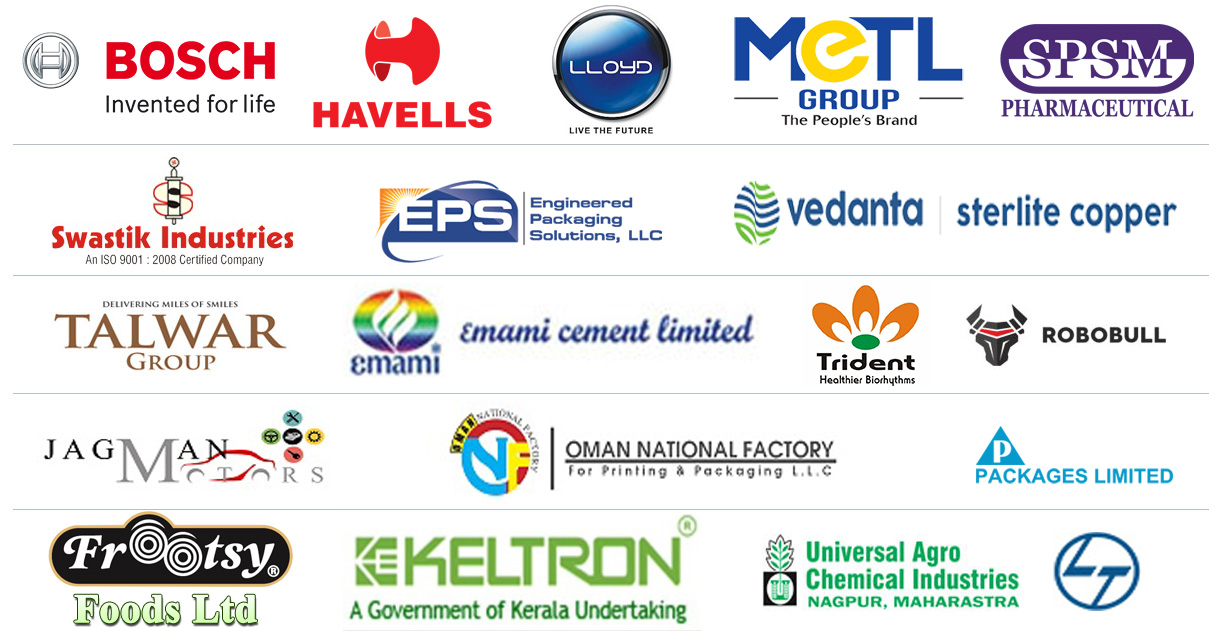Urea Fertiliser (Production Rate: 100 TPD)

- More than 40 years of experience
- Managed by expert industrial consultants
- ISO 9001-2015 Certified
- Registered under MSME, UAM No: DL01E0012000
- 24/5 Research Support
Get your quesries resolved from an industry expert. Ask your queries before report or book purchase. - Custom Research Service
Speak to the our consultant to design an exclusive study to serve your research needs. - Quality Assurance
All reports are prepared by highly qualified consultants & verified by a panel of experts. - Information Security
Your personal & confidential information is safe & secure.
UREA FERTILISER (PRODUCTION RATE: 100 TPD)
[EIRI/EDPR/4773] J.C.: 2993XL
INTRODUCTION
Urea is an important nitrogenous fertilizer. Its utilization is increasing steadily, it being the preferred nitrogen fertilizer worldwide. It is used in solid fertilizer, liquid fertilizer, formaldehyde resins and adhesives.
Urea is an organic compound with the chemical formula (NH2)2CO. Urea is also known by the International Non-proprietary Name (INN) carbamide, as established by the World Health Organization.
Urea white crystalline solid containing 46% nitrogen is widely used in the agriculture industry as an animal feed additive and fertilizer. Agriculture forms the major sector in the national economy of the majority of the countries in the Southeast Asian region. As these countries try to expand the sector, through diversification of agriculture and extensive multiple cropping programs, the demand for agriculture chemicals growing day by day.
Fertilizer is generally defined as “any material, organic or inorganic, natural or synthetic, which supplies one or more of the chemical elements required for the plant growth”. The main aim of the fertilizer industry is to provide the primary and secondary nutrients which are required in macro quantities. Primary nutrients are normally supplied through chemical fertilizers. They are chemical compounds containing one or more of the primary nutrients and are generally produced by chemical reactions. Whatever may be the chemical compounds, its most important ingredient for plant growth is the nutrient content. The primary nutrients are Nitrogen, Phosphorus and Potassium. However, their concentration in a chemical fertilizer is expressed as a percentage of total nitrogen (N), available phosphate (P2O5) and soluble K2O. The grade of a fertilizer is expressed as a set of three numbers in the order of percent N, P2O5 and K2O.
Fertilizers are thus, most important products of the chemical industry. Over a period of time, fertilizer production technology continued to advance rapidly. This is due to the increased population & need for excessive food production to fulfil their demand. Nitrogen is the nutrient used in fertilizer in the largest amount. There are various nitrogenous compounds, which are send as fertilizer, such as, Ammonium Nitrate; Calcium Ammonium Nitrite; Ammonium Sulphate Nitrate; Urea; Nitrogen Solutions, Ammonium Sulphate; Calcium Nitrate; Sodium Nitrate; Ammonium Chloride; etc.
Urea is produced on a scale of some 100,000,000 tons per year worldwide. For use in industry, urea is produced from synthetic ammonia and carbon dioxide. Urea can be produced as prills, granules, flakes, pellets, crystals, and solutions. More than 90% of world production is destined for use as a fertilizer. Urea has the highest nitrogen content of all solid nitrogenous fertilizers in common use (46.7%). Therefore, it has the lowest transportation costs per unit of nitrogen nutrient. Urea is highly soluble in water and is, therefore, also very suitable for use in fertilizer solutions (in combination with ammonium nitrate).
Urea is commercially produced from two raw materials, ammonia, and carbon dioxide. Large quantities of carbon dioxide are produced during the manufacture of ammonia from coal or from hydrocarbons such as natural gas and petroleum-derived raw materials. This allows direct synthesis of urea from these raw materials. The production of urea from ammonia and carbon dioxide takes place in an equilibrium reaction, with incomplete conversion of the reactants. The various urea processes are characterized by the conditions under which urea formation takes place and the way in which unconverted reactants are further processed. Unconverted reactants can be used for the manufacture of other products, for example ammonium nitrate or sulphate, or they can be recycled for complete conversion to urea in a total- recycle process.
Large population countries like China, India, Pakistan, and Bangladesh are largely manufacturing the Urea for Domestic consumption. Due to high cost of the production facility. Government incentives are common in 3rd world countries. In Middle East Saudi Arabia developed the large production facility of Urea production as an allied industry of the petroleum product.
Urea Market size was valued at USD 131.54 billion in 2021 and is poised to grow from USD 137.85 billion in 2022 to USD 200.59 billion by 2030, growing at a CAGR of 4.8%.
COST ESTIMATION
Plant Capacity 100 MT/Day
Land & Building (10,193 sq.mt.) Rs. 10.11 Cr
Plant & Machinery Rs. 360.84 Cr
Working Capital for 1 Month Rs. 7.78 Cr
Total Capital Investment Rs. 391.66 Cr
Rate of Return 10%
Break Even Point 80%
CONTENTS
INTRODUCTION
USES/APPLICATIONS
AGRICULTURAL USE
ADVANTAGES OF FERTILIZER UREA
SOIL APPLICATION AND PLACEMENT OF UREA
SPREADING OF UREA
INDUSTRIAL USE
FURTHER COMMERCIAL USES
LABORATORY USE
MEDICAL USE
DRUG USE
DIAGNOSTIC USE
TEXTILE USE
1. PHYSICAL CHARACTERISTICS
2. CHEMICAL CHARACTERISTICS
PRODUCT QUALITY (TYPICAL)
MARKET OVERVIEW
TECHNOLOGICAL DEVELOPMENTS IN MANUFACTURING PROCESS TO AID MARKET GROWTH
RISING DEMAND FROM AGRICULTURE AS A FERTILIZER AND ANIMAL FEED TO BOOST MARKET GROWTH
GROWING DEMAND FROM INDUSTRIAL APPLICATIONS TO DRIVE MARKET GROWTH
RISING AWARENESS ABOUT ORGANIC FARMING TO HINDER MARKET
SEGMENTATION ANALYSIS
BY GRADE ANALYSIS
FERTILIZER GRADE TO LEAD MARKET DUE TO EXTENSIVE ADOPTION AS KEY NITROGEN FERTILIZER
BY APPLICATION ANALYSIS
OWING TO HIGHER DEMAND, THE AGRICULTURE SEGMENT ACCOUNTS FOR LARGEST REVENUE SHARE
REGIONAL INSIGHTS
LEADING ENTITIES TO AIM FOR PRODUCTION EXPANSION TO MEET RISING DEMAND
KEY PLAYERS
STORAGE & HANDLING - PRECAUTIONS
STORAGE AND HANDLING - AMMONIA
STORAGE AND HANDLING - UREA
GOOD STORAGE PRACTICE
SAFETY RULES
SAFE HANDLING OF FERTILIZERS
FERTILIZER HAZARDS
GENERAL PRECAUTIONS
EMERGENCY RESPONSE IN CASE OF FIRE
RAW MATERIALS
AMMONIA
CARBON DIOXIDE
CATALYSTS
THE FOLLOWING CATALYSTS WOULD BE REQUIRED FOR THE PROJECT
BASIS - TECHNICAL
INHOUSE PRODUCED RAW MATERIAL
UTILITIES
OFFSITES
PROJECT DESCRIPTION
AMMONIA PLANT
UREA PLANT
ENGINEERING CONSULTANT/PROCESS LICENSOR
AMMONIA PLANT
THE MOST PROMINENT AMMONIA PROCESS TECHNOLOGY SUPPLIERS AT PRESENT ARE AS FOLLOWS:
UREA PLANT
THE CURRENT GLOBAL LEADING LICENSORS OF UREA TECHNOLOGY ARE AS FOLLOWS:
PROCESS SELECTION
CONVENTIONAL PROCESSES
ONCE THROUGH PROCESS
CONVENTIONAL RECYCLE PROCESS
STAMICARBON CO2 – STRIPPING PROCESS
SNAMPROGETTI AMMONIA AND SELF-STRIPPING PROCESSES
ISOBARIC DOUBLE RECYCLE PROCESS
ACES PROCESS
PROCESS COMPARISONS
SAIPEM/SNAMPROGETTI PROCESS IS PROPOSED FOR UREA PLANT FOR THIS FEASIBILITY REPORT
STOICHIOMETRIC BALANCE
FORMULATIONS
WATER BALANCE
SPECIFICATION
RAW MATERIAL SUPPLIERS
AMMONIA & UREA PRODUCTION
AMMONIA SYNTHESIS
UREA SYNTHESIS
MANUFACTURING PROCESS STEPS
THE PROCESS IS SHOWN SCHEMATICALLY IN FIGURE
STEP 1 - HYDROGEN PRODUCTION
STEP 2 - NITROGEN ADDITION
STEP 3 - REMOVAL OF CARBON MONOXIDE
STEP 4 - WATER REMOVAL
STEP 5 - REMOVAL OF CARBON OXIDES
STEP 6 - SYNTHESIS OF AMMONIA
OVERALL CONVERSION
AMMONIA SPECIFICATIONS
FEEDSTOCK DESULPHURIZATION
PRIMARY REFORMING
SECONDARY REFORMING
SHIFT CONVERSION:
CO2 REMOVAL
METHANATION
PROCESS FLOW
UREA MANUFACTURING PROCESS
STEP 1 - SYNTHESIS
SCHEMATIC REPRESENTATION OF UREA SYNTHESIS
STEP 2 - PURIFICATION
STEP 3 - CONCENTRATION
STEP 4 - GRANULATION
OPERATING VARIABLES FOR REACTOR OPERATION
TEMPERATURE:
PRESSURE:
CONCENTRATION:
RESIDENCE TIME:
BIURET FORMATION:
ENGINEERING CONSTRAINTS
CARBAMATE DECOMPOSITION AND RECYCLE:
PRODUCTION OF GRANULAR UREA:
HEAT DISSIPATION IN THE AUTOCLAVE:
CORROSION:
PROCESS FLOW
ETP FACILITY
ETP FLOW DIAGRAM (TYPICAL)
SEWAGE AND WASTE WATER EFFLUENT
STP FLOW DIAGRAM (TYPICAL)
WASTE GENERATION & MANAGEMENT/GREEN BELT
WATER (ESTIMATED)
FLUE GAS (ESTIMATED)
UTILITIES
UTILITIES REQUIREMENT PER MONTH (ESTIMATED)
ENVIRONMENTAL ISSUES
AIR POLLUTION
THERMAL POLLUTION
ENGINEERING DESIGN CONSIDERATIONS
PLANT & MACHINERY (BROADLY)
COMPLETE PLANT AND TECHNOLOGY SUPPLIERS
POTENTIAL EQUIPMENT SUPPLIERS
CONDENSER/HEAT EXCHANGER
WASTE WATER TREATMENT PLANT
REACTORS/VESSEL/TANKS
DISTILLATION COLUMN/SCRUBBER/EXCHANGER/TANKS
HEATER
D.G. SETS
POWER TRANSFORMERS
COOLING TOWER
ETP PLANTS
AIR POLLUTION CONTROL EQUIPMENTS
AIR CONDITIONING EQUIPMENTS
AIR COMPRESSOR
PLATEFORM WEIGHING MACHINE
MATERIAL HANDLING EQUIPMENTS
FIRE FIGHTING EQUIPMENTS
ELECTRICAL MEASURING INSTRUMENTS
SUBMERSIBLE WATER PUMP
INSTRUMENTATION & PROCESS CONTROL EQUIPMENTS
DCS SYSTEM
POTENTIAL RISKS
ENVIRONMENTAL STANDARDS AND COMPLIANCE - WASTE WATER (IF DISCHARGE TO SEA)
HARMFUL TO MARINE LIFE
DEPLETION OF OXYGEN IN SEAWATER
A THREAT TO HUMAN HEALTH
GENERAL REQUIREMENTS
TECHNICAL REQUIREMENTS
QUALITY CONTROL
ANTICIPATED ENVIRONMENTAL IMPACTS
CONSTRUCTION PHASE
OPERATION PHASE
MITIGATION MEASURES (PROPOSED)
HEALTH SAFETY & ENVIRONMENT
SAFETY & OCCUPATIONAL MEASURE (STORAGE/HANDLING OF RAW MATERIAL & PRODUCT)
SAFETY DATA SHEETS
ENVIRONMENTAL/SAFETY LIABILITY AND ENVIRONMENT CLEARANCE PROCESS - HAZARD
PRINCIPLES OF PLANT LAYOUT
MAJOR PROVISIONS IN ROAD PLANNING FOR MULTIPURPOSE SERVICE ARE:
PLANT LOCATION FACTORS
PRIMARY FACTORS
RAW-MATERIAL SUPPLY:
MARKETS:
POWER AND FUEL SUPPLY:
WATER SUPPLY:
CLIMATE:
TRANSPORTATION:
WASTE DISPOSAL:
LABOR:
REGULATORY LAWS:
TAXES:
SITE CHARACTERISTICS:
COMMUNITY FACTORS:
FLOOD AND FIRE CONTROL:
PRELIMINARY PLANT LAYOUT
PROPOSED IMPLEMENTATION SCHEDULE
ENGINEERING PACKAGE/DOCUMENTS
BASIS – PROJECT ECONOMICS
PROJECT FINANCIALS
BASIS & PRESUMPTIONS (FOR PROFITABILITY WORKINGS)
THE UREA PRODUCTION WILL BE 36000 TPA
CONCLUSIONS
LICENCES NEEDED BY THE UREA FERTILIZER MANUFACTURING UNIT
CERTIFICATE OF MANUFACTURE OF FERTILISER
POLLUTION NOC/CONSENT CERTIFICATE
FACTORY LICENCE
ADDITIONAL LICENCES AND PERMISSIONS TO SET UP A FERTILIZER INDUSTRY
APPENDIX – A:
01. PLANT ECONOMICS
02. LAND & BUILDING
03. PLANT AND MACHINERY
04. OTHER FIXED ASSESTS
05. FIXED CAPITAL
06. RAW MATERIAL
07. SALARY AND WAGES
08. UTILITIES AND OVERHEADS
09. TOTAL WORKING CAPITAL
10. TOTAL CAPITAL INVESTMENT
11. COST OF PRODUCTION
12. TURN OVER/ANNUM
13. BREAK EVEN POINT
14. RESOURCES FOR FINANCE
15. INSTALMENT PAYABLE IN 5 YEARS
16. DEPRECIATION CHART FOR 5 YEARS
17. PROFIT ANALYSIS FOR 5 YEARS
18. PROJECTED BALANCE SHEET FOR (5 YEARS)
How to Make Project Report?
Detailed Project Report (DPR) includes Present Market Position and Expected Future Demand, Technology, Manufacturing Process, Investment Opportunity, Plant Economics and Project Financials. comprehensive analysis from industry covering detailed reporting and evaluates the position of the industry by providing insights to the SWOT analysis of the industry.
Each report include Plant Capacity, requirement of Land & Building, Plant & Machinery, Flow Sheet Diagram, Raw Materials detail with suppliers list, Total Capital Investment along with detailed calculation on Rate of Return, Break-Even Analysis and Profitability Analysis. The report also provides a birds eye view of the global industry with details on projected market size and then progresses to evaluate the industry in detail.
We can prepare detailed project report on any industry as per your requirement.
We can also modify the project capacity and project cost as per your requirement. If you are planning to start a business, contact us today.
Detailed Project Report (DPR) gives you access to decisive data such as:
- Market growth drivers
- Factors limiting market growth
- Current market trends
- Market structure
- Key highlights
Overview of key market forces propelling and restraining market growth:
- Up-to-date analyses of market trends and technological improvements
- Pin-point analyses of market competition dynamics to offer you a competitive edge major competitors
- An array of graphics, BEP analysis of major industry segments
- Detailed analyses of industry trends
- A well-defined technological growth with an impact-analysis
- A clear understanding of the competitive landscape and key product segments
Need Customized Project Report?
- Ask for FREE project related details with our consultant/industry expert.
- Share your specific research requirements for customized project report.
- Request for due diligence and consumer centric studies.
- Still haven't found what you're looking for? Speak to our Custom Research Team
About Engineers India Research Institute:
Note: We can also prepare project report on any subject based on your requirement and country. If you need, we can modify the project capacity and project cost based on your requirement.
Our Clients

Our Approach
- Our research reports comprehensively cover Indian markets (can be modified as per your country), present investigation, standpoint and gauge for a time of five years*.
- The market conjectures are produced on the premise of optional research and are cross-accepted through associations with the business players
- We use dependable wellsprings of data and databases. What's more, data from such sources is handled by us and incorporated into the report
Why buy EIRI reports?
- Our project reports include detailed analysis that help to get industry Present Market Position and Expected Future Demand.
- Offer real analysis driving variables for the business and most recent business sector patterns in the business
- This report comprehends the present status of the business by clarifying a complete SWOT examination and investigation of the interest supply circumstance
- Report gives investigation and top to bottom money related correlation of real players/competitors
- The report gives gauges of key parameters which foresees the business execution





















